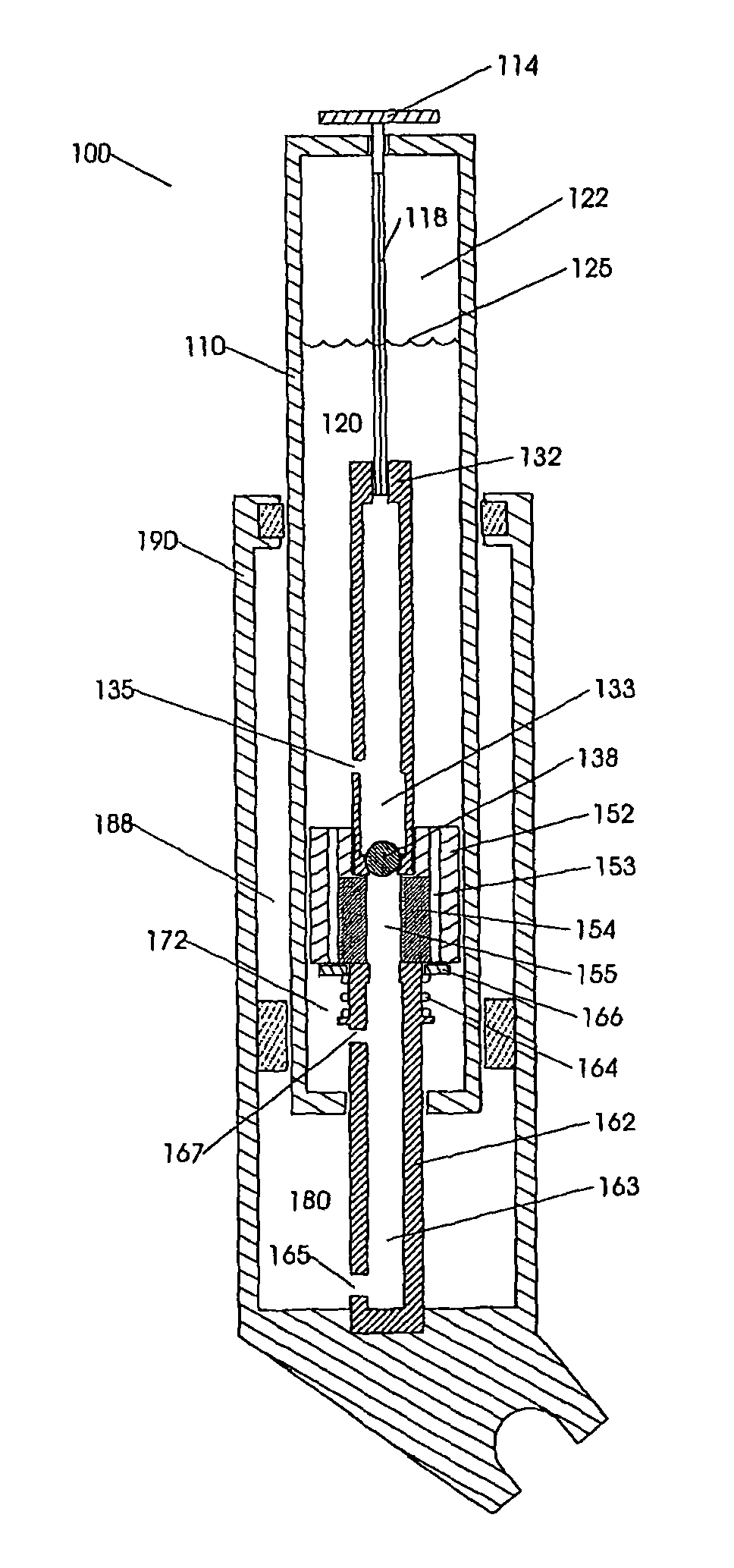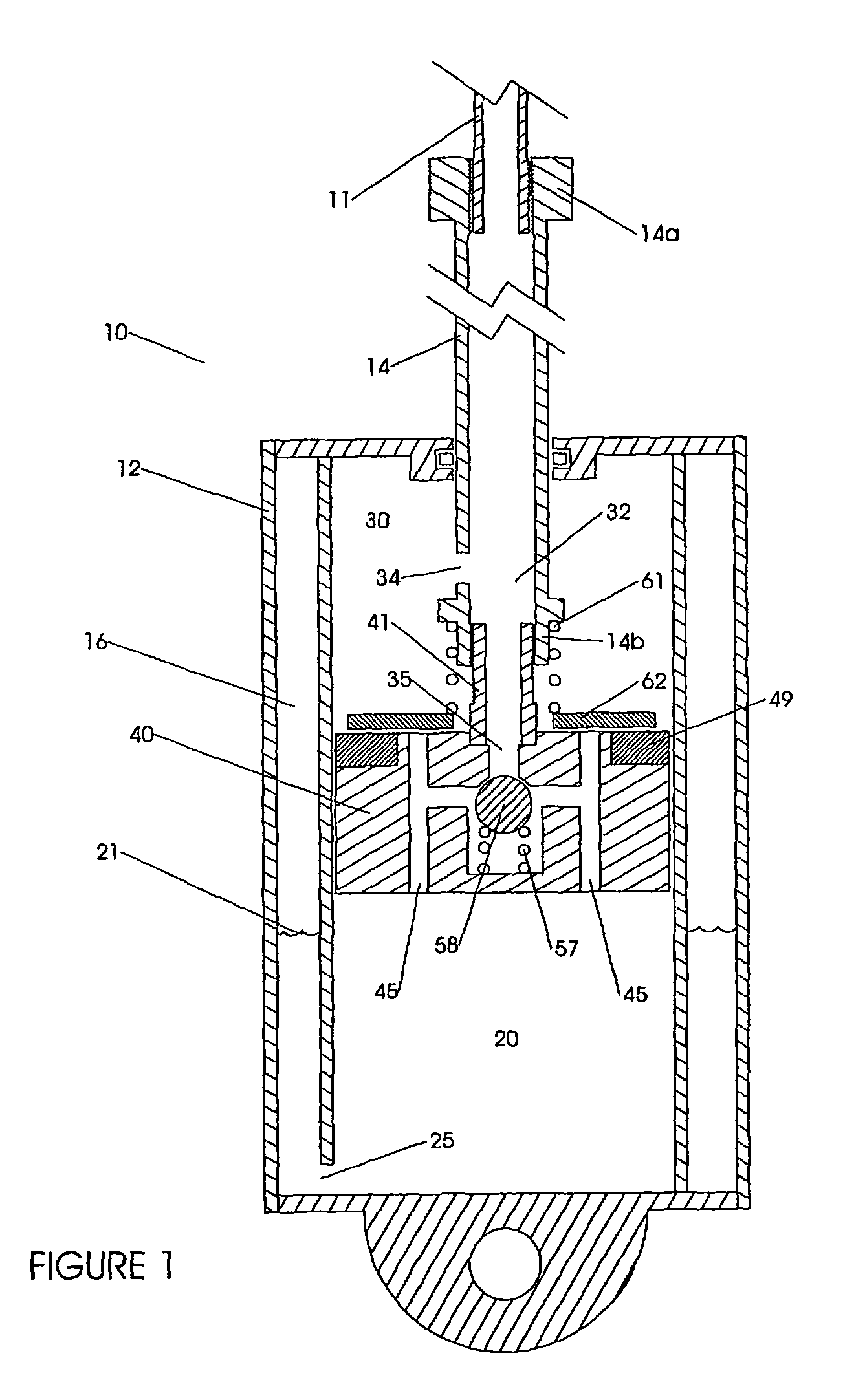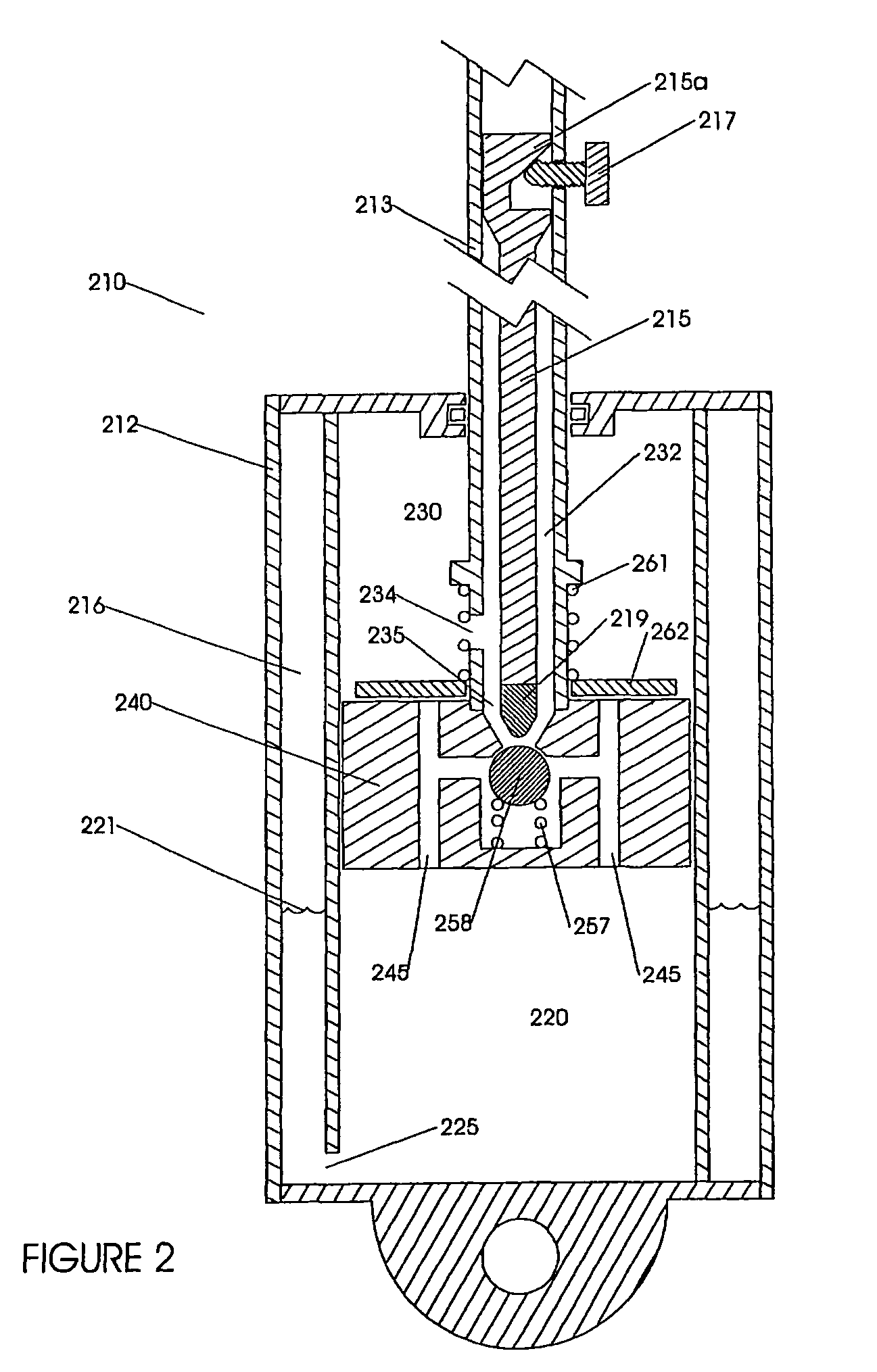Magnetic valve for shock absorbers
a technology of damper valve and magnetic valve, which is applied in the direction of shock absorbers, steering devices, cycle equipment, etc., can solve the problems of loss of pedaling efficiency, limited sensitivity of damper valve, and limited potential of damper flow-sensitive shims to distinguish between bumps and movements of vehicle chassis, etc., to achieve the effect of improving suspension performan
- Summary
- Abstract
- Description
- Claims
- Application Information
AI Technical Summary
Benefits of technology
Problems solved by technology
Method used
Image
Examples
Embodiment Construction
[0034]FIG. 1 shows the basic components of the shock absorber damper 10 including the cylindrical housing 12, the piston rod 11 and piston 40. The double wall of the housing forms the compartment 16 that contains a gas or other compressible medium that permits the level of fluid in the reservoir 21 to vary with displacement of fluid from chamber 20 through the port 25 as the piston rod enters the housing. This is described more fully below.
[0035]The velocity at which the piston 40 can move further into the housing under a given load is partly governed by the rate at which oil or other hydraulic fluid can flow from the compression chamber 20 through the port 45 in the piston 40, thence past the compression shim 62 and into the rebound chamber 30. It will become apparent that the compression shim 62 serves as part of a valve that is biased into the closed position by magnetic attraction between the shim 62 and the ring 49 embedded in the piston. These cooperating components tend to fo...
PUM
 Login to View More
Login to View More Abstract
Description
Claims
Application Information
 Login to View More
Login to View More - R&D
- Intellectual Property
- Life Sciences
- Materials
- Tech Scout
- Unparalleled Data Quality
- Higher Quality Content
- 60% Fewer Hallucinations
Browse by: Latest US Patents, China's latest patents, Technical Efficacy Thesaurus, Application Domain, Technology Topic, Popular Technical Reports.
© 2025 PatSnap. All rights reserved.Legal|Privacy policy|Modern Slavery Act Transparency Statement|Sitemap|About US| Contact US: help@patsnap.com



